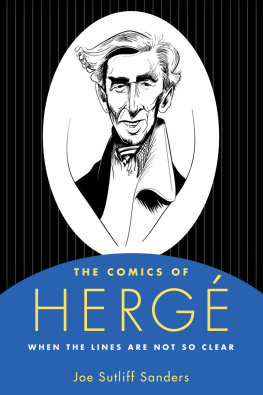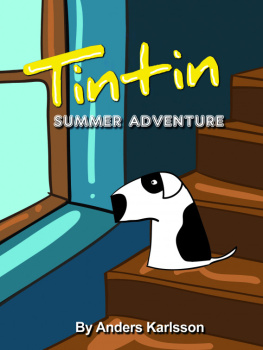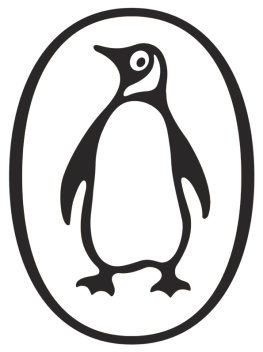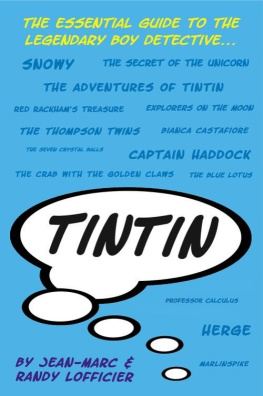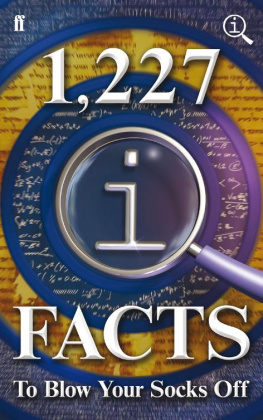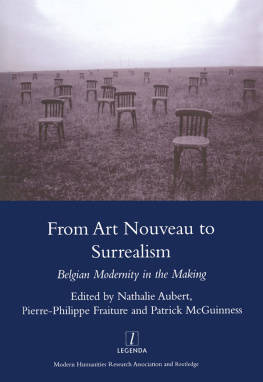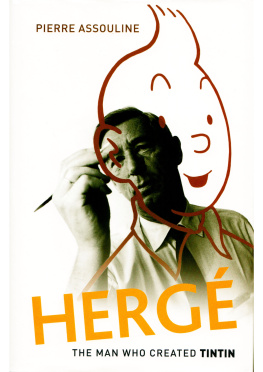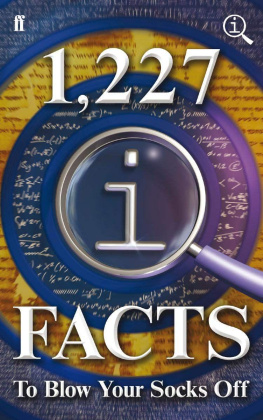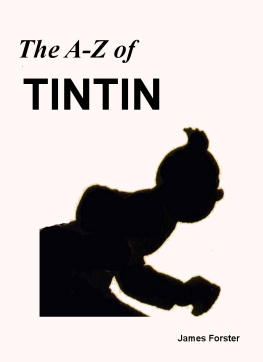Also by Harry Thompson
The Man in the Iron Mask
Richard Ingrams: Lord of the Gnomes
Peter Cook: A Biography
This Thing of Darkness
Penguins Stopped Play
Tintin
Herg and His Creation
HARRY THOMPSON

www.johnmurray.co.uk
First published in Great Britain in 1991 by Hodder & Stoughton
An Hachette UK Company
This edition first published in 2011 by John Murray (Publishers) An Hachette UK company
Copyright The Estate of Harry Thompson 1991
The moral right of the Author of the Work has been asserted in accordance with the Copyright, Designs and Patents Act 1988.
All rights reserved. No part of this publication may be reproduced, stored in a retrieval system, or transmitted, in any form or by any means without the prior written permission of the publisher.
A CIP catalogue record for this title is available from the British Library
eISBN 978-1-84854-673-8
John Murray (Publishers)
338 Euston Road
London NW1 3BH
www.johnmurray.co.uk
Contents
Authors Note
T intin first appeared in black-and-white, in the magazine Petit Vingtime, between 1929 and 1940. Thereafter he moved to the newspaper Le Soir until 1944. These strips were packaged up into books, initially by the Petit Vingtime itself, and thereafter by the publisher Casterman. From 1942, all Tintin books were published in colour, and most of the old black-and-white stories were coloured and shortened to fit the new format. From 1946, Tintin appeared in his own Tintin magazine, and all stories were illustrated in colour from the start.
All Tintin books referred to in the text are the English-language editions, published by Methuen, with the exception of Tintin In The Land Of The Soviets and Tintin And Alph-Art, both of which are published by Sundancer. A full list of all Tintin titles, together with the dates of their first appearances in magazine, book and translated form, is to be found at the back of this book.
All quotations from Herg, unless otherwise stated, are drawn from the only major interview he ever gave: Entretiens Avec Herg, by Numa Sadoul (Casterman). All quotations from Bob de Moor, Leslie Lonsdale-Cooper and Michael Turner, unless otherwise stated, are drawn from a series of interviews conducted by the author in England and Belgium between December 1988 and October 1990.
This book has been prepared without the assistance of the Herg Foundation. Certain contributors have asked to remain anonymous.
1
Tintin Keeps Up Appearances
O n Thursday 8 May 1930, the train from Moscow pulled into Brussels Gare du Nord. Station officials fought to control a huge and excited crowd that surged forward, eager to catch a glimpse of their hero. As the big black engine drew to a halt, the carriage doors opened and a familiar quiff was spotted bobbing above the heads of the travellers. The crowd went wild.
The young boy stepping confidently from the train was dressed in Russian costume, as befitting anyone who had just single-handedly conquered an entire continent, and put a nation of cowardly Bolsheviks to flight. By his side strode a small white dog on a lead. Behind him hovered a thin, nervous young man in a raincoat, recognised by only a few as the artist Georges Remi, or Herg, who had spent the past year-and-a-half chronicling the adventures of the lad in front of him for the readers of the Vingtime Sicle newspaper. Tintin, junior reporter and adventurer extraordinaire, was coming home to meet his public at last.
The adulation was so unstinting that few onlookers noticed the unusually dark colour of Tintins hair, or the fact that his quiff kept falling down into his eyes. Doubtless, those that had spotted the sizeable jar of hair grease under Hergs arm didnt mind that ever-increasing dollops were needed to maintain their heros celebrated hairstyle. As for the usually perky Snowy, well, the doleful black-eared beagle at Tintins side simply got lost in a forest of feet. If youd told the multitude that Tintin was in fact Henri de Donckers, a cut-price actor rented for the day, whod got on the train with Herg a couple of stops up the line, none of them would have believed you.
Waiting to meet the train, and Herg in particular, was an appropriately royalist dignitary the ex-Empress Zita of Austria-Hungary. Just as the breathless author had made contact with her, and was waiting to be presented officially, the crowd swept Donckers off in another direction. Georges looked at the Empress, at the sagging quiff now disappearing rapidly into the scrum, and at the pot of hair grease in his arms. He made up his mind, and plunged into the crowd after his protg. For the rest of his life, through thick and thin, euphoria and black depression, he was never able to leave Tintins side again.
In due course, the prototype comic strip hero the young Jacques Martin, the creator of Alix, who later joined Hergs staff, remembers: I think it was somewhere between The Broken Ear and The Black Island that I decided to become a comic strip artist I imagined Herg as a sort of kindly grandfather.
In the wider public arena, Tintins success over the intervening years has been no less dramatic. By 1990, over a hundred million Tintin books have been sold. It is an astonishing figure, unmatched outside the enormous markets of the USA. The sales graph resembles the floor of a valley which rises slowly and ever more steeply towards a vertical cliff face. Today, Tintin books are selling as never before, with at least as many adult buyers as children. What is the incredible worldwide appeal of a boy with a 1930s hairstyle, who fights 1930s villains, in 1930s cars, without once disturbing his immaculate 1930s plus fours?
The Belgian critic and intellectual Michel Serres is in no doubt. The blank domino generates and embraces the whole series of dominos. The creative centre, Tintins head or Georges genius, shine
There, perhaps, in one paragraph, is the essence of Tintins success. Herg detested that sort of pseudo-intellectual rubbish and all who traded in it, and kept his stories as far away from it as possible. The hidden meanings and allegories that others found in Tintins activities were of no interest to him. His aim was always to keep it simple and direct. Herg always preferred an illustration that advanced the storyline to one with purely aesthetic appeal.
Whether by accident or design, this narrative directness successfully transcended the boundaries of time and place, and continues to do so. It barely seems to matter today that Tintins escapades in Eastern Europe in King Ottokars Sceptre are directed at saving the throne of a jodhpur-wearing King from an adversary who sports a monocle and a haircut that went out with the Nuremberg trials. It is hardly important that all the streets in The Red Sea Sharks are painstaking observations of obscure parts of Brussels. The stories and just as importantly, the humour are universal.
Hergs jokes, although they developed from simple slapstick in the early days to sophisticated character comedy in later years, were mainly visual. This was not a premeditated bid for international success; it was not until after the war that Tintin escaped the confines of the French- and Flemish-speaking worlds. Right from his earliest and most parochial pre-Tintin material, Herg always found universal human moods and responses anger, embarrassment, pomposity, and so on funnier than any humorous contrivance. He disliked wordplay, pointing to Asterix (perhaps with a modicum of professional jealousy) as an example of how not to do it.
Next page

